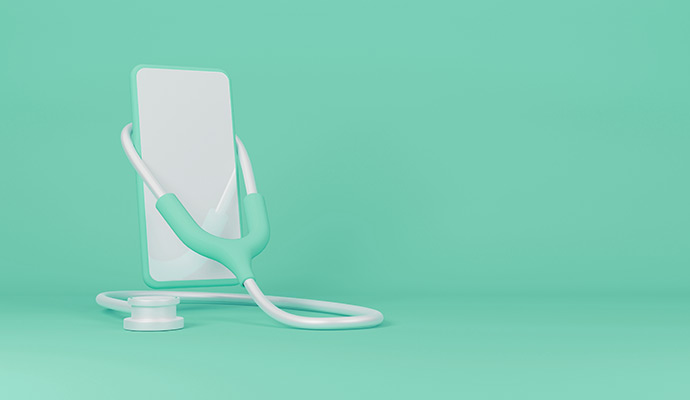Smartphone-based cognitive testing for rare dementia feasible, reliable
Conducting cognitive testing via smartphones could support early detection of a rare type of dementia that largely affects 45 to 60 year olds, research indicates.

Source: Getty Images
- New research shows that smartphone-based tests for a rare type of dementia are feasible, reliable, valid, and scalable, which could enable early detection of the condition.
Published in JAMA Network Open, the study assessed whether cognitive testing conducted remotely via smartphones can provide reliable and valid data for frontotemporal lobar degeneration.
Frontotemporal lobar degeneration (FTLD) results from damage to neurons in the frontal and temporal lobes of the brain, according to the National Institutes of Health (NIH). Also called frontotemporal disorders (FTD), the pathology can affect behavior, communication, and walking ability. It is rare and affects people at a younger age than other forms of dementia. More than half of people (60 percent) with FTD are 45 to 64. The disease is also progressive, worsening over time.
Thus, researchers examined the efficacy of remote smartphone-based cognitive assessments for FTLD, investigating whether this type of testing could improve early detection.
They conducted a cohort study from January 10, 2019, to July 31, 2023, enrolling participants from ongoing FTLD studies through 18 centers of a North American FTLD research consortium. Study participants included controls and people with FTLD who performed smartphone application-based executive functioning tasks and an associative memory task three times over two weeks on their own smartphones.
Of 1,163 eligible individuals with FTLD, 360 were enrolled in the study. Participants were divided into two groups, with 258 in the discovery cohort and 102 in the validation cohort. The cohorts did not significantly differ in terms of demographic characteristics, disease severity, or cognition.
Among 329 participants with data available on disease stage, 195 were asymptomatic or had preclinical FTLD (59.3 percent), 66 had prodromal FTLD (20.1 percent), and 68 had symptomatic FTLD (20.7 percent).
Researchers found that smartphone tests showed moderate-to-excellent reliability, with tests displaying reliability within a single administration, that is, internally consistent, and across repeated assessments, that is, test-retest reliability. The association of smartphone tests with disease severity, criterion-standard neuropsychological tests, and brain volume supported validity. The reliability and validity findings were similar across the discovery and validation cohorts.
Further, smartphone tests accurately differentiated individuals with dementia from controls, with an area under the curve of 0.93. The tests were also more sensitive to early symptoms, achieving an area under the curve of 0.83, than the Montreal Cognitive Assessment, a tool for early detection of mild cognitive impairment.
“The findings of this cohort study, coupled with prior reports indicating that smartphone testing is feasible and acceptable to patients with FTLD, suggest that smartphones may complement traditional in-person research paradigms,” the researchers concluded.
This is the latest example of a virtual care approach to managing neurodegenerative diseases.
In January 2022, a report published in the International Journal of General Medicine stated that telehealth could expand access to care for patients who have neurodegenerative diseases such as Parkinson’s disease or dementia.
Based on a virtual panel discussion between experts in geriatric psychiatry, movement disorders, and neuropsychology in October 2020, the report noted that telehealth visits could help eliminate the need for long-distance travel, aid mental healthcare management, and enable remote administration of cognitive tests, among other benefits.
Additionally, last year, University of California San Diego (UC San Diego) engineers developed a smartphone attachment that can help screen people for various neurological conditions. The attachment enables accurate pupillometry, measuring pupil dilation, via the smartphone camera regardless of skin color.
“People in our field have thought of the idea of using smartphones to do pupil measurements,” said Edward Wang, PhD, director of the Digital Health Technologies Lab in The Design Lab at UC San Diego, in an interview with mHealthIntelligence. “The issue is that regular cameras cannot distinguish very well between dark irises and the pupil. A dark iris is much like how the skin is darker for some people because of the melanin.”
Thus, the attachment uses far-red light while blocking out other wavelengths, making the iris appear lighter, which allows the pupil to be seen more easily with a regular camera.
